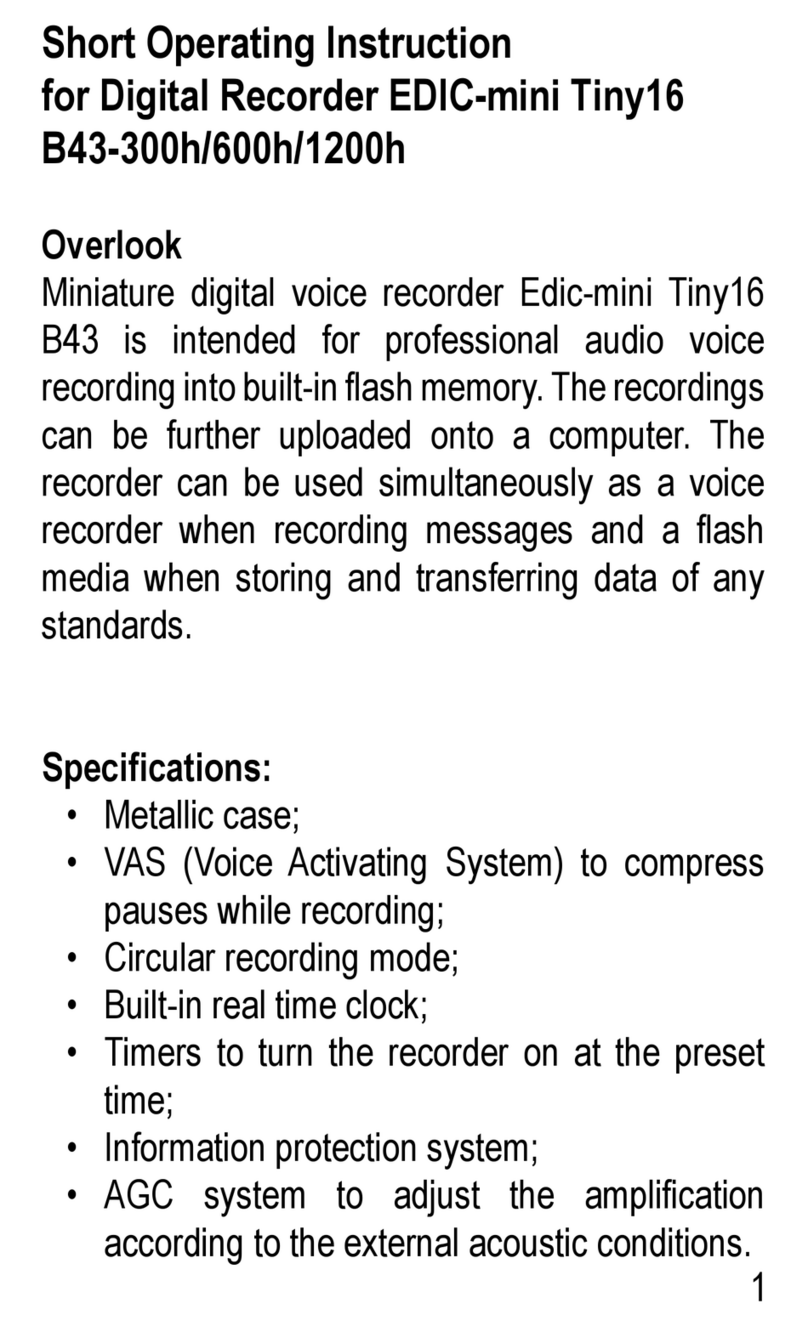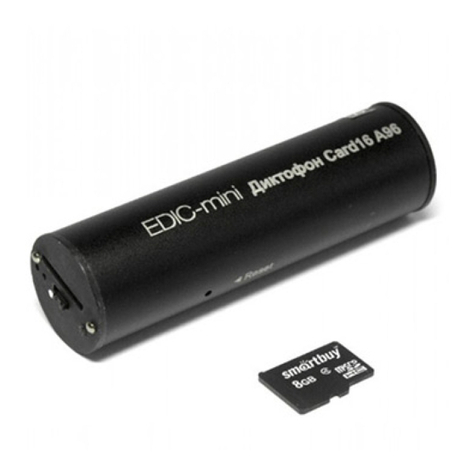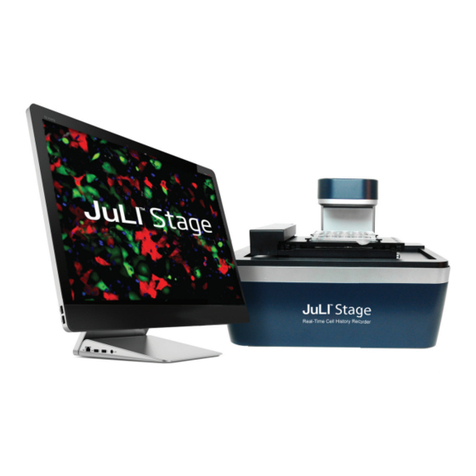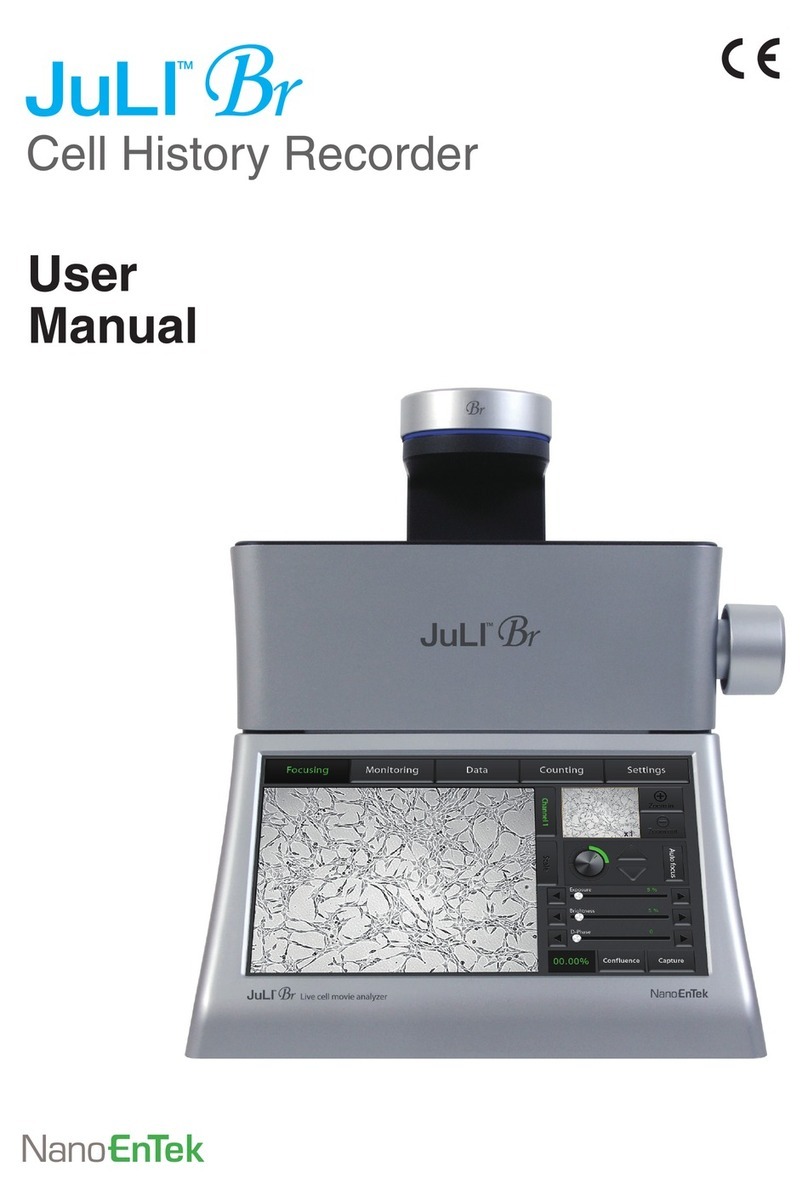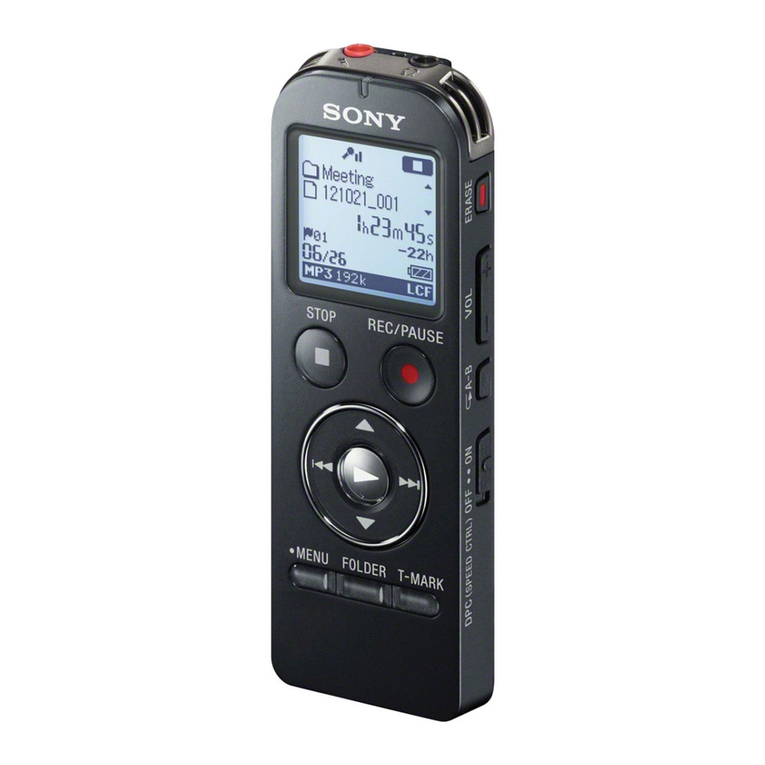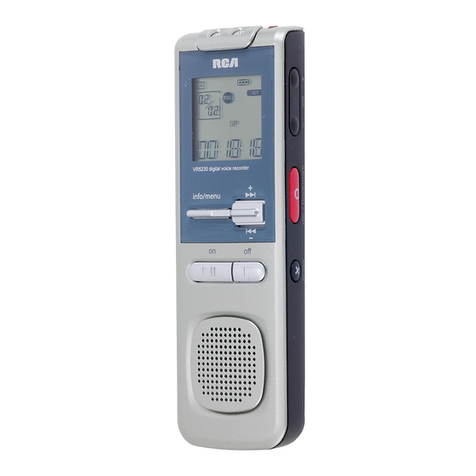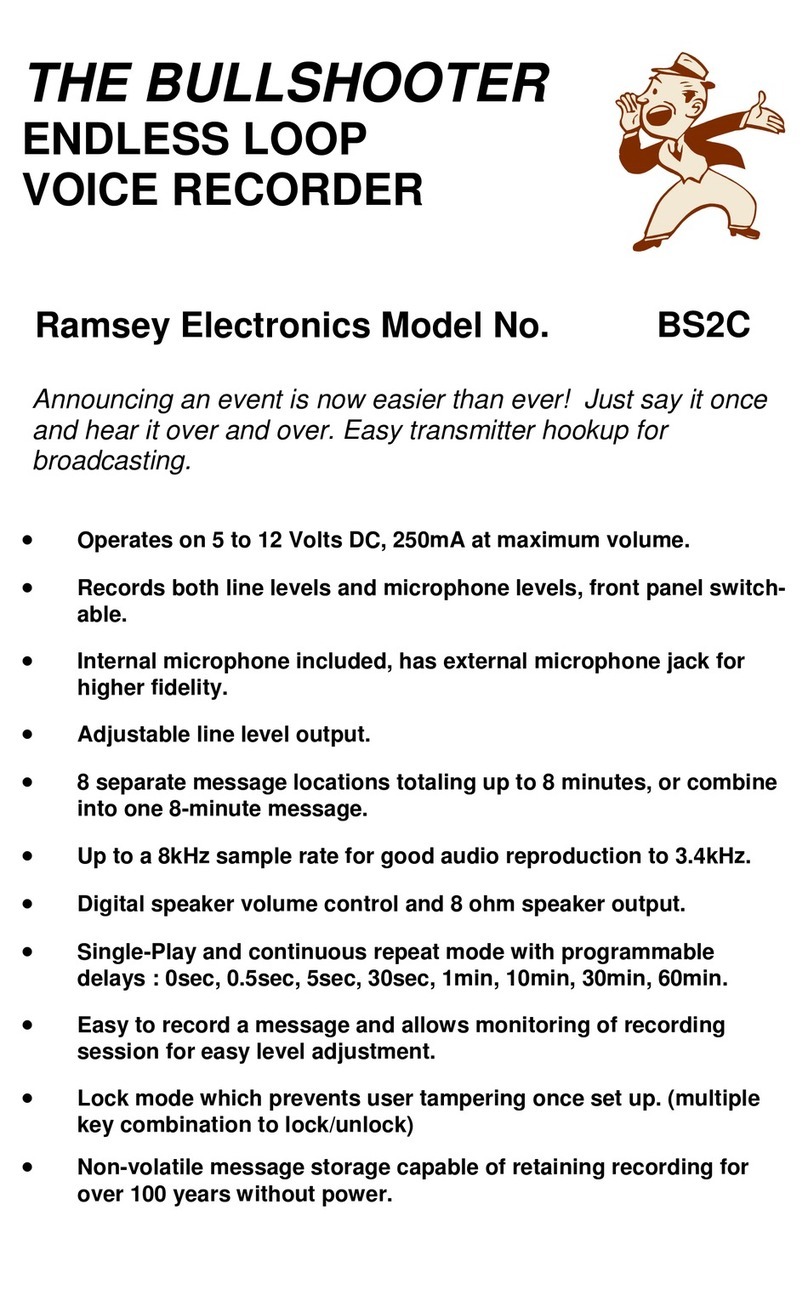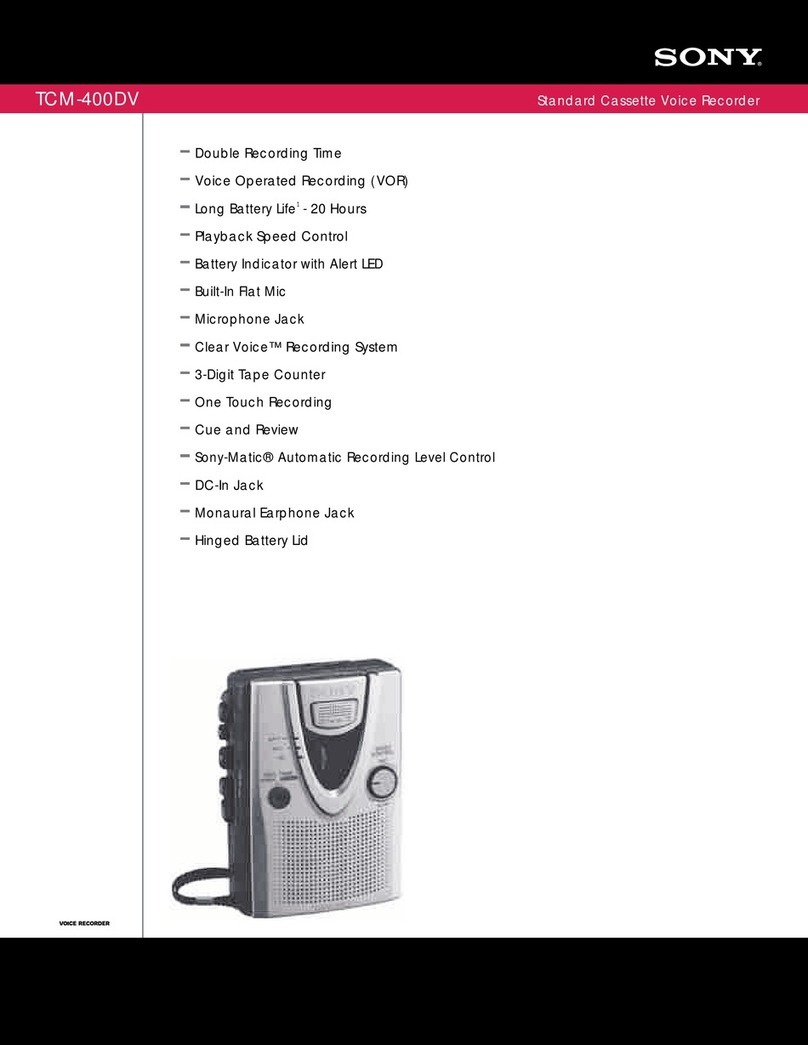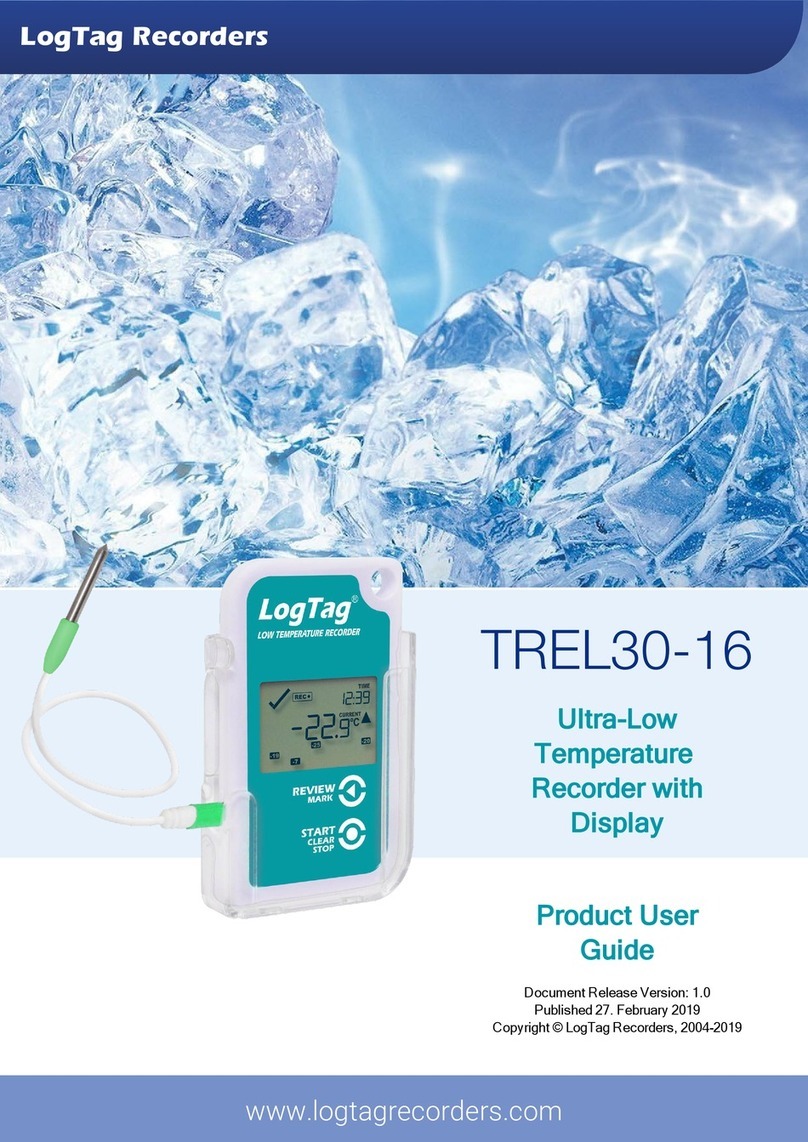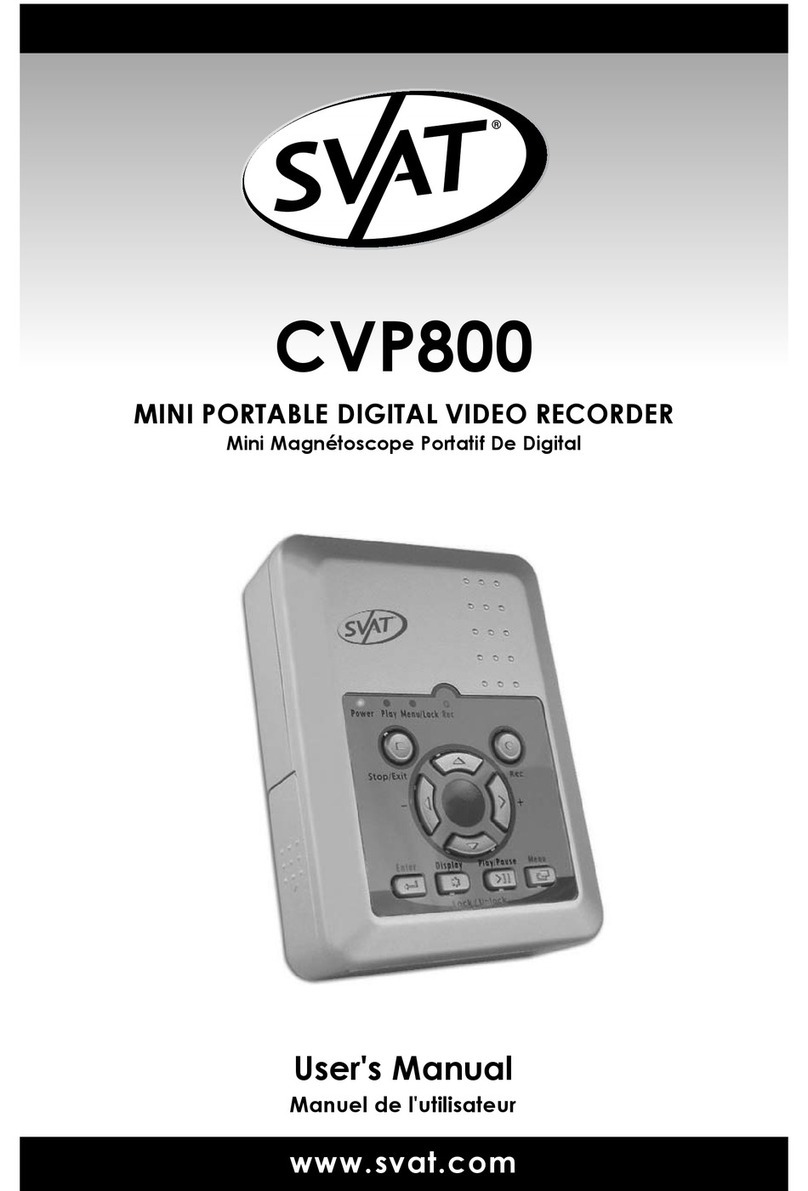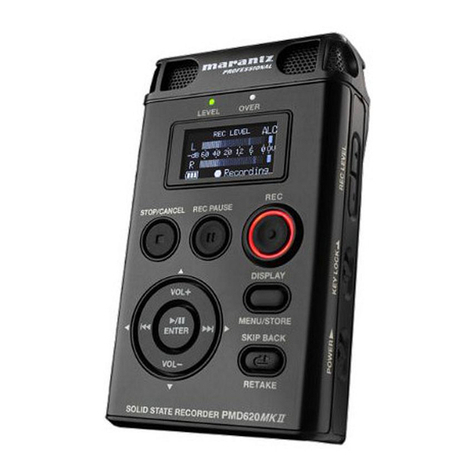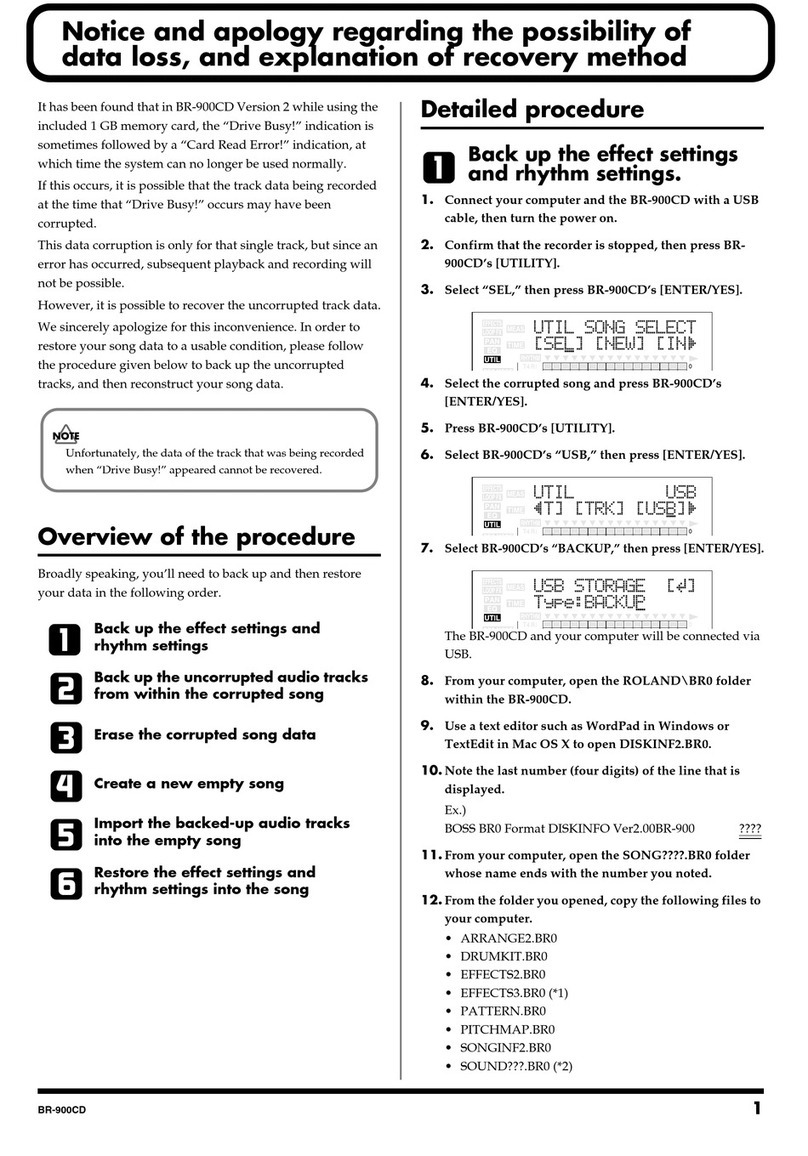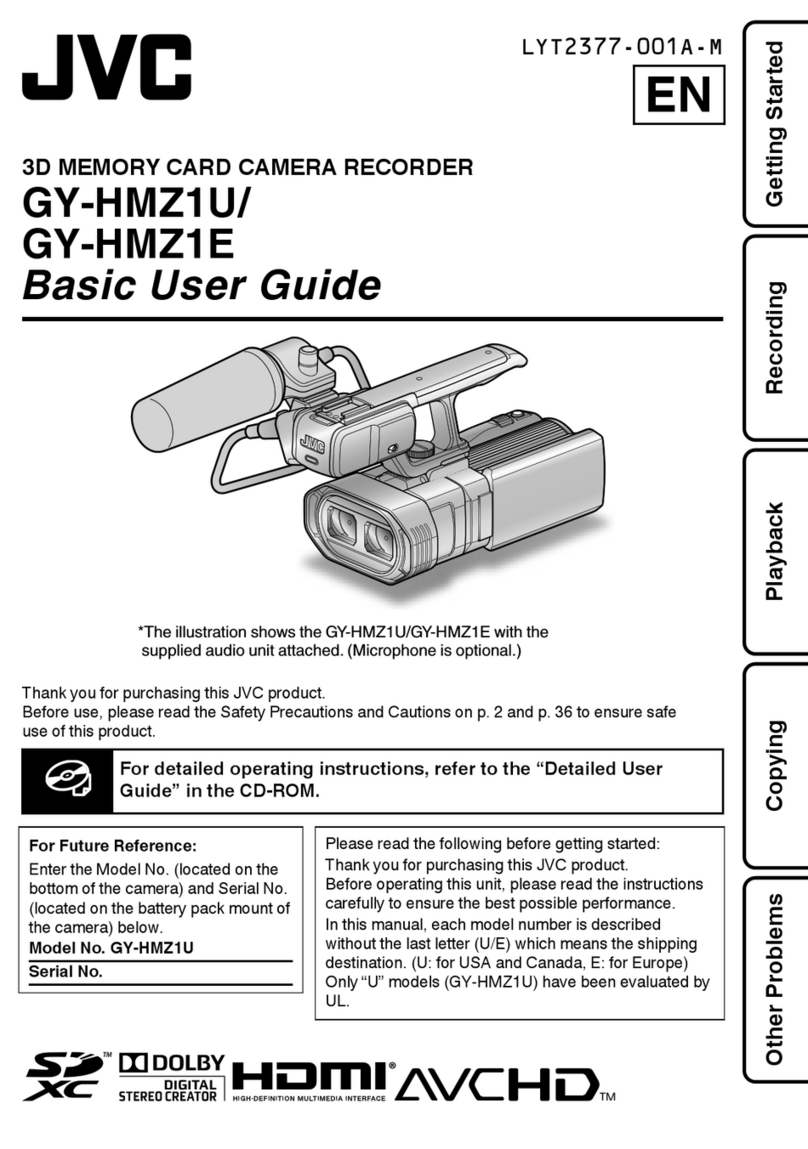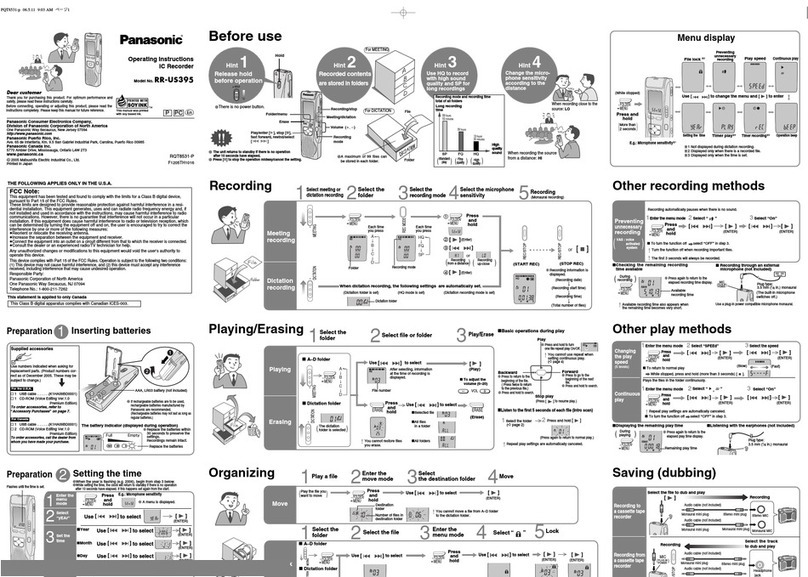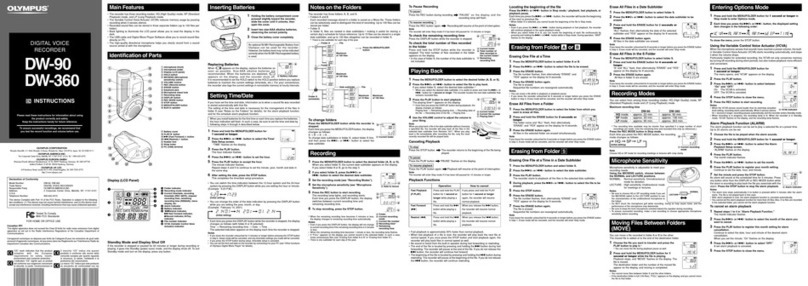
JuLI™Stage, Real-Time Cell History Recorder
4 5
Position Calibration
(Vessel type)
Stitching Image Calibration
(Stitching & Map mode)
1. Press the Move To A01 or B02 button.
Like the picture, stage will move to A01 or B02 well
and the center square displays the current location.
2. Press the Check A01 or B02 button.
If you press the button, The Stage will move to 4 quad-
rants (top, bottom, left and right) to check positioning
around the radius of the well. The outside of well will be
displayed on each square of quad rant. If location adjust-
ment is needed, adjust is the location to be symmetrical
based on the red line. When you double click the loca-
tion, the red line will move to the clicked location.
3. To apply the adjusted value, click Calibration A01 or B02
button.
To check the current applied condition, press Check A01
or B02 button one more time.
4. Press the Move to B02 or C03
(Well number can be changed by vessel type. Basically, it is
expressed in the end well of the relevant vessel type.)
5. Press the Check B02 or C03
Repeat the same process with A01 or B02 well calibration.
6. Press Save button and X button to nish vessel calibration.
1. Select Make Map of Map Mode from Preview tap.
If there is overlapped image during map mode or stitching, use this function.
2. Press Calibration button in the Make Map.
3. Select Horizontal Axis Mode button.
4. Press Calibration distance button to adjust Y-axis
location. Move to appropriate location by dragging
the two overlapped images with the mouse.
5. Press Vertical Axis Mode button.
6. Press Calibration distance button to adjust X-axis
location. Move to appropriate location by dragging
the two overlapped images with the mouse.
7. Press Save button and X button to nish stitching
image calibration.
7. Click X button to end calibration.
